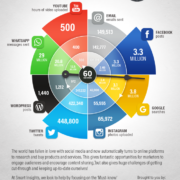Google Listing Scams
Google Listing, Google My Business, Google “Map Pack,” Google Knowledge Box, and Google Maps listings are all based on the same data. Do not fall victim to a random fishing call stating that there is something wrong with your Google My Business Listing (or Google Listing). Many of our clients have contacted us stating that they have received a phone call from an “unknown” number, or a random phone number attempting to get information from them to update their listing. The caller is either a recording or a person stating that their Google Listing is unverified, and they must take action immediately. This is a scam.
Your current marketing provider should be updating your business page as needed. Additionally, once your business is verified with Google, there is no need for this process to happen again. So, let’s talk a little bit about Google and how businesses appear on a Search Engine Results Page (SERP) based on the information Google has.
Google verifies brick-and-mortar businesses (even if they provide services to the home, like Carpet Cleaning or AC Repair) via postcard. The purpose of this is two-fold. One purpose is to validate the business address so that it appears correctly in Google “Map” Pack on a SERP. Additionally, this information is included in Google Maps, with a unique ID number assigned to your business location.
The Google Knowledge Box (the info on the right had side of a SERP which usually includes customer service number, images, logo, name of business owner, etc.) is based on a little bit different set of information that Google pulls from the website or product listing page of a website. However, having your Google My Business information and Google Location information all in synch helps improve the chance your info will appear in a Knowledge Box.
If you have any questions about how to ensure your Google Listing is optimized, or if you want any help making sure your local business is showing up in the most relevant SERP listings possible, please contact us today. We WILL HELP YOU! 727-742-6473.

















